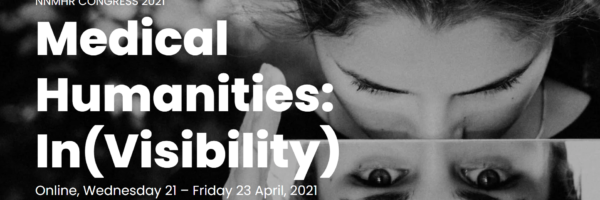“Caméra de vidéo-surveillance” by zigazou76 is licensed under CC BY 2.0
Vanishing and Surveillance in Pandemic Times
In Saleema Nawaz’s uncannily prescient 2020 novel Songs for the End for the World, a new coronavirus dubbed ARAMIS (acute respiratory and muscular inflammatory syndrome) rips through New York and rapidly spreads across the globe. The text itself unfolds almost like an extended contact tracing exercise as Nawaz guides the reader through the interweaving lives of her characters.
Enmeshed within this sprawling network is Edith, a young woman who is an off-the-books server at the restaurant that becomes known as ‘ground zero’, the first site of infection. After a photograph of Edith is released in a public appeal for information, she disappears while her image becomes notorious as ‘ARAMIS Girl’. As conspiracy theories and misinformation proliferate around her, reporters note that what has really captured the public imagination is ‘the idea of someone remaining unidentifiable and unlocatable in our current information age’.
While Edith’s disappearance is seen by the wider population as selfish and reckless, a ‘modern-day Typhoid Mary’, Nawaz’s core characters are sympathetic, some even admiring her ability to remain hidden. Emma (who, as a member of a famous rock band, is consistently denied any privacy of her own) avidly follows news reports on ARAMIS Girl, imagining her ‘ducking reporters like another plague and guarding her privacy before it could be stripped away by force’.
Critic Btihaj Ajana writes that being visible through information technologies (predominantly through data sharing) is increasingly being regarded as a ‘public good’ while caring about privacy is seen as potentially ‘selfish and anti-solidaristic’. This tension between personal privacy and public duty has only been exacerbated by the COVID-19 pandemic when the safety of others can depend on you being ‘seen’ by digital contact tracing systems.
The choice to ‘opt in’ to these systems masks the constant and virtually invisible process of data gathering performed by the same technology corporations involved in the creation of contact tracing platforms: companies like Apple, Facebook, Google, and Tencent, the core practices of which are surveillance capitalism. While Ajana highlights a divide between the individual and the community, posthumanist scholar Rosi Braidotti notes that the monetisation of data under surveillance capitalism threatens to turn all life into ‘a commodity for trade and profit’.
In Oreet Ashery’s 2016 video installation Revisiting Genesis, Ashery investigates the commodification of life through emerging death industries selling the notion of a ‘digital afterlife’. These companies, from digital will and legacy management to AI projects like LifeNaut (that aim to ‘transfer human consciousness to computers/robots’ like BINA48) depend on the notion of a static sense of self that can be ‘datafied’, preserved, and, ultimately, monetised beyond the demise of the material body.
Unlike Edith’s more passive slipping under the radar in Nawaz’s novel, the vanishing body of Genesis in Ashery’s work is an act of resistance to commodification: ‘a refusal to be fixed’. Braidotti argues that commodification occurs ‘under the cover of individualism’. Through rejecting a fixed state, however, Genesis’s disappearance is not an act of self-protection or to maintain privacy, but in fact a rejection of selfhood that is static, atomised, and profitable.
For Briadotti, against the ‘possessive individualism’ promoted through surveillance capitalism, vanishing – or ‘becoming-imperceptible’ – represents an act of posthuman community and care: surrendering the self and ‘merging into this generative flow of becoming’ of interconnected human and nonhuman life.
At the end of Songs for the End of the World, Nawaz depicts a similar kind of merging as two of her characters, Elliot and Edith, return to the milieu of New York, the ‘heart of the calamity’. While most of Nawaz’s cast of privileged characters flee from society – escaping on boats or to remote cabins laden with panic bought goods – Elliot and Edith’s return reflects a turn from self-protection to collective care: ‘But now he (Elliot) saw that what would save them was already there … in every attempt to repair, cooperate, persevere. Communicate. Connect’.
In the figure of ARAMIS Girl, Nawaz highlights contemporary anxieties about what it means to be seen in a time of near constant surveillance, especially in a time of pandemic. But while pandemic surveillance methods such as contact tracing depend on visible and static identities, these works could perhaps suggest that vanishing or ‘becoming-imperceptible’ can also be seen as an act of community building and (posthuman) care.
Suggested further reading.
- Ajana, Btihaj, ‘Digital health and the biopolitics of the Quantified Self’, Digital Health, 3 (2017), 1-18. https://doi.org/10.1177%2F2055207616689509. Ashery, Oreet (2016), Revisiting Genesis. http://revisitinggenesis.net/.
- Braidotti, Rosi (2013), The Posthuman. Cambridge: Polity.
- Lyon, David, ‘Surveillance, Snowden, and Big Data: Capacities, consequences, critique’, Big Data & Society (2013), 1-13. https://doi.org/10.1177%2F2053951714541861
- Nawaz, Saleema (2020), Songs for the End of the World. Toronto: McClelland & Stewart.
- Van Dijk, Jose, ‘Datafication, dataism, and digital dataveillance: Big data between scientific paradigm and ideology’, Surveillance & Society, 12:2 (2014), 197-208. https://doi.org/10.24908/ss.v12i2.4776
Other posts related to the NNMHR 4th Annual Congress #NNMHR2021




